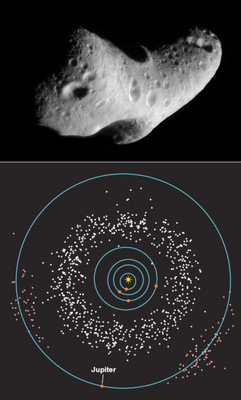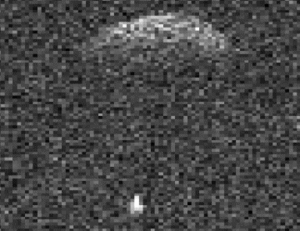Asteroids often come in pairs, with the two objects spinning around each other. Now scientists say sunlight could be the cause of these binary boulders.
A new study suggests energy from the sun can spin up a single asteroid until it ejects material that becomes a separate satellite.

|
| ©diagram - Minor Planet Center; image - NASA/Johns Hopkins University Applied Physics Laboratory
|
| The main belt is between the orbits of Mars and Jupiter, and contains countless asteroids.
|
Astronomers first discovered these
strange asteroid pairs 15 years ago, and have been puzzled about what causes them. Now scientists have created a computer model that matches what they see.
"So far our results match the properties of binary asteroids quite well," said astronomer Kevin Walsh of the Observatoire de la Cote D'Azur in Nice, France. Walsh led the study when he was a graduate student at the University of Maryland, working with his advisor Derek Richardson and Patrick Michel of the Cassiope'e, University of Nice-Sophia Antipolis, in Nice.


